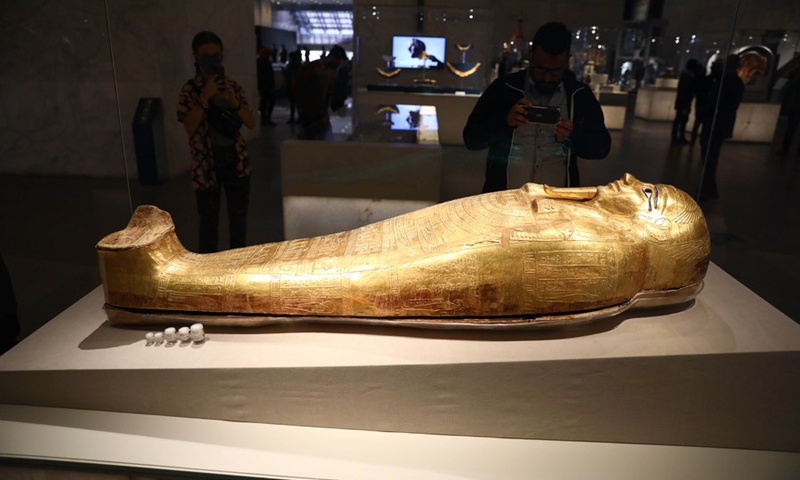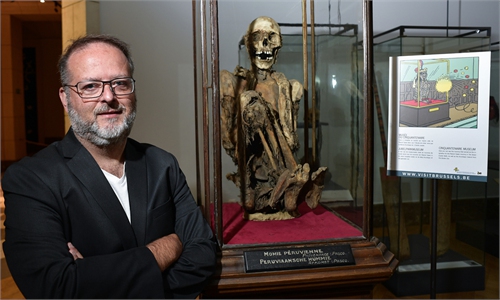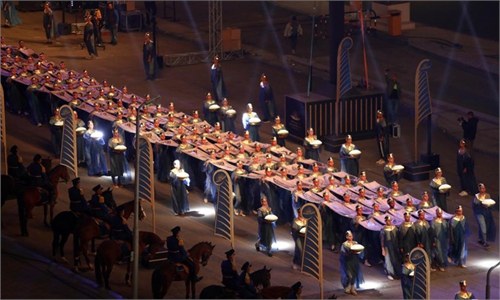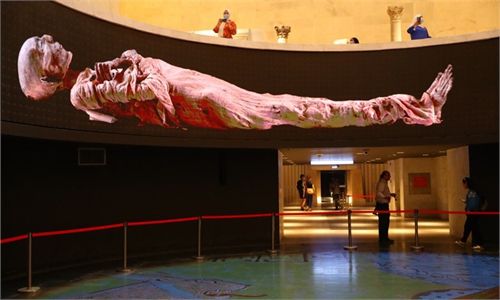
A pharaoh's mummy coffin is on display at the National Museum of Egyptian Civilization in Cairo, Egypt, April 4, 2021, as its main hall opens for visitors for the firs time.(Photo: Xinhua)
Chile's Chinchorro mummies, the oldest in the world to have been preserved by humans, were added to UNESCO's World Heritage List on Tuesday.
The mummies, which were found in the north of Chile at the start of the 20th century, are more than 7,000 years old, which means they pre-date the Egyptian mummies by two millennia.
The United Nations' cultural organization announced on Twitter that it had added the "settlement and artificial mummification of the Chinchorro culture" to its prestigious list during a virtual meeting chaired by China.
"UNESCO is validating on an international level, through different experts, that the settlements and artificial mummification of the Chinchorro culture has exceptional value, that it has a global importance," Chilean anthropologist Bernardo Arriaza told AFP.
The Chinchorro were fishers and hunter gatherers more than 7,000 years ago in an area where the desert and Pacific Ocean meet in what is today the south of Peru and north of Chile. So far, more than 300 mummies have been found.
The mummification process consisted of removing the organs, intestines and tissue.
The skin was then ripped off the corpse and the body rebuilt using sticks and animal hair, while a thick head of black hair was sewn onto the scalp. They were painted red or black using earth, pigments, manganese and iron oxide.
"There's a subtlety, a creativity by these first populations," said Arriaza, director of the Chinchorro Center at the Tarapaca University in Arica.
AFP



